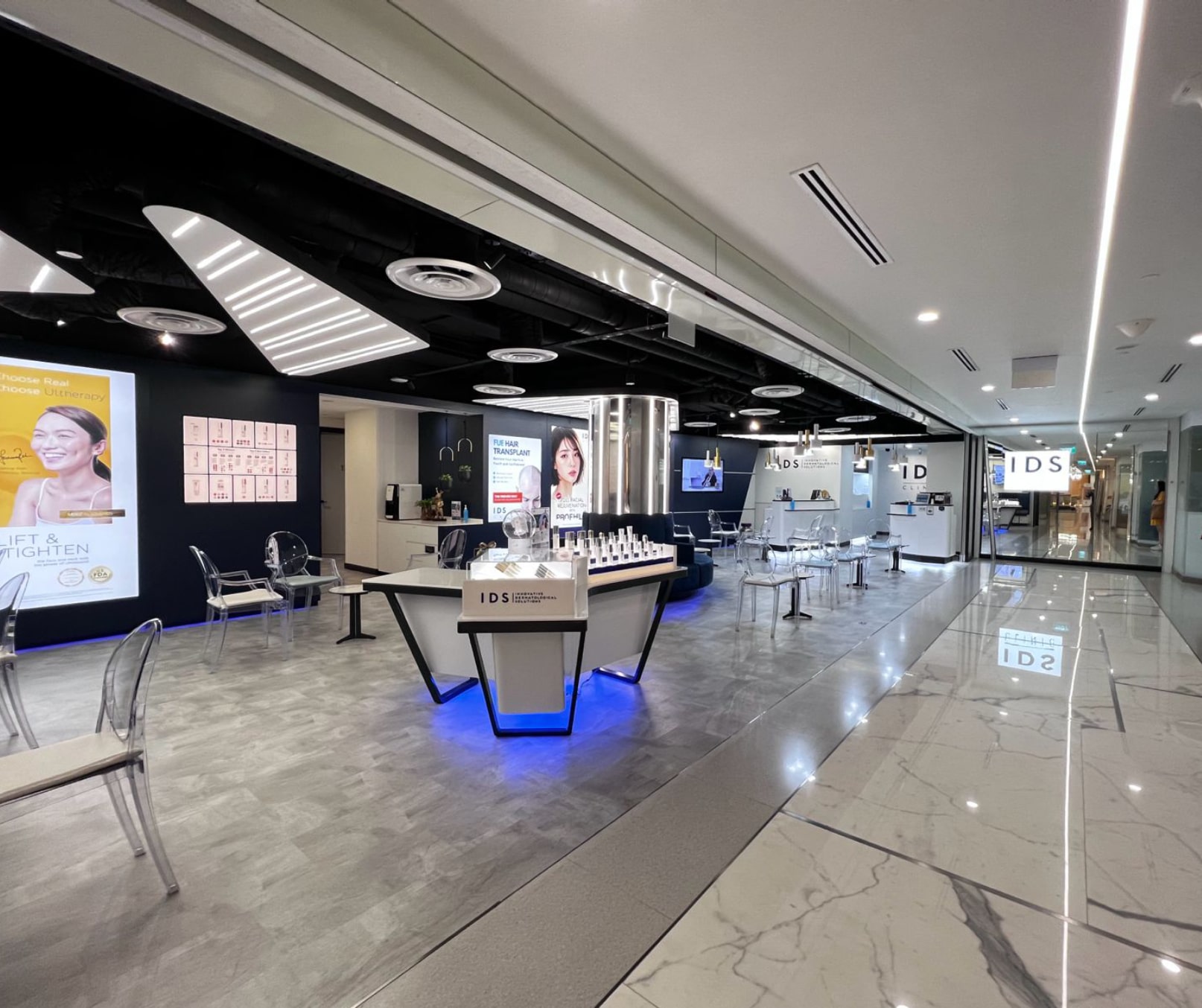Acne Scarring
Acne scars are permanent textural changes and indentations that occur on the skin as a result of severe acne. They can present clinically as shallow depressions, ice-pick scars or box-cart scars.
It does not refer to the colour changes from the acne condition(eg. redness or darkening of the skin after inflammation).
Book Appointment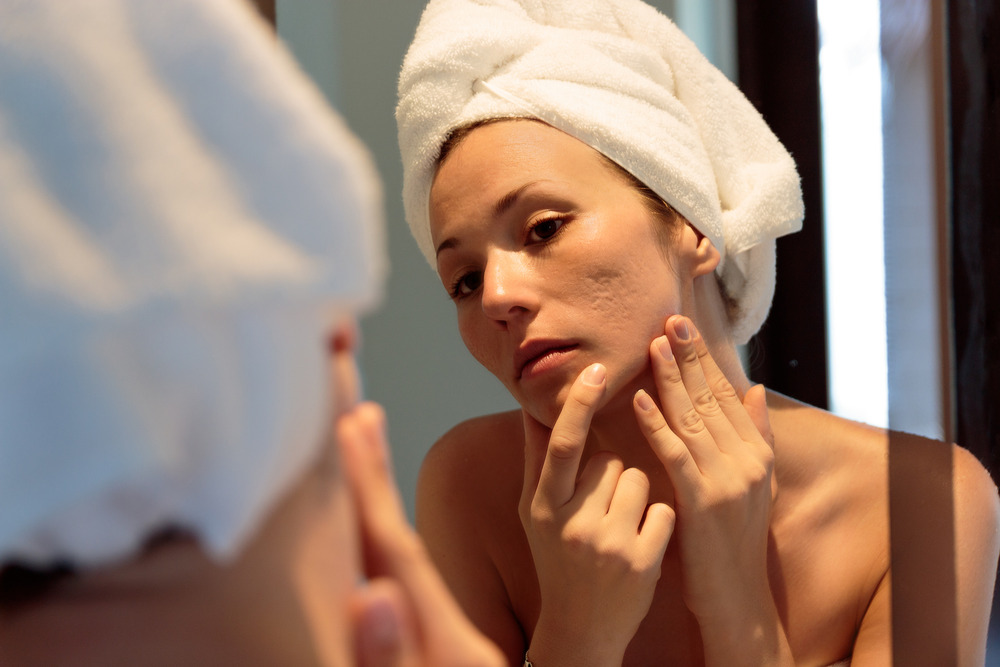

SUCCESS CASES
*Due to MOH guidelines in Singapore, medical clinics cannot show before & after photos on their websites. However, we would be delighted to showcase our photographs and actual results during your in-clinic consultation with us.
Our Doctors
VIEW ALL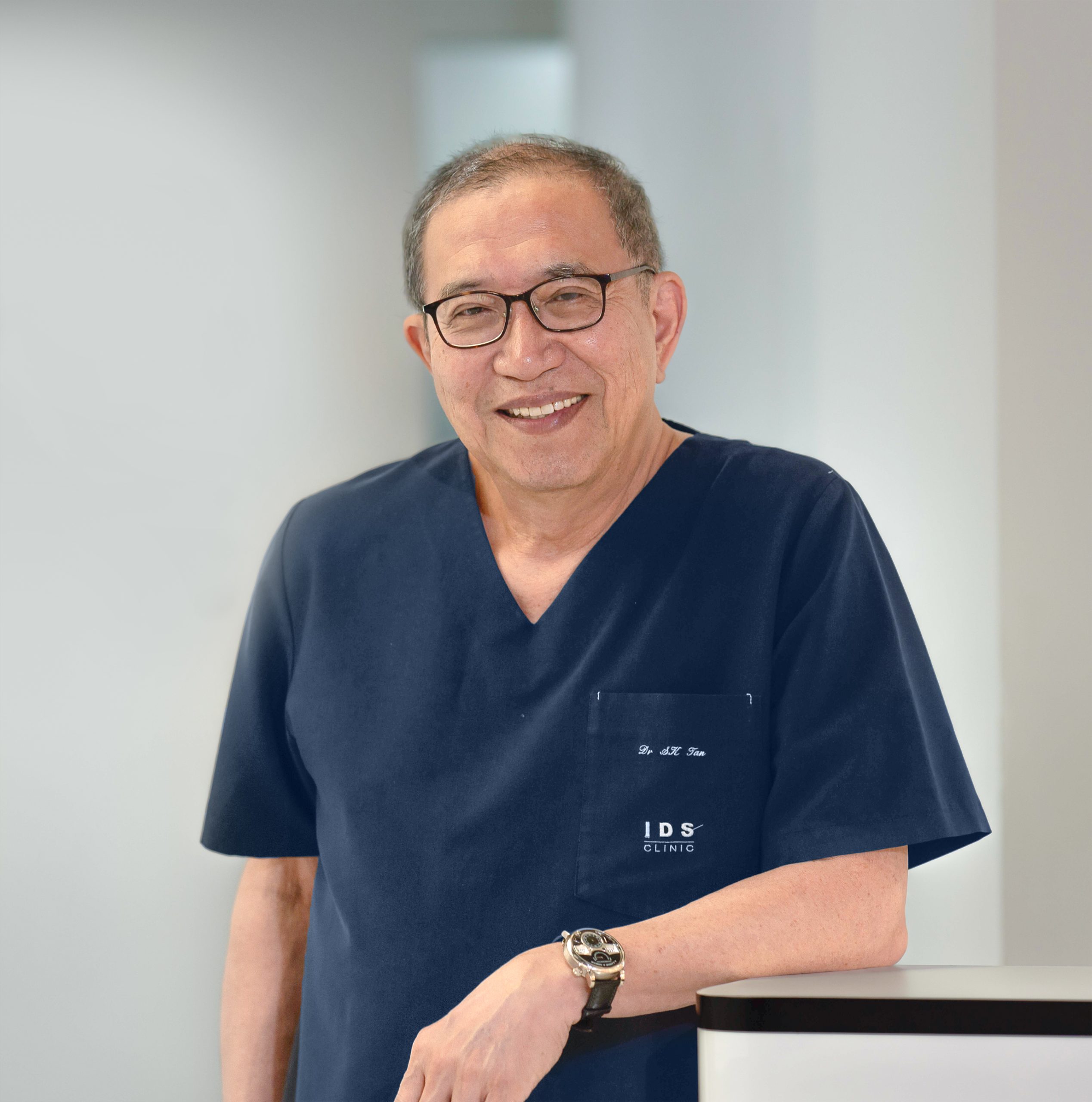
Dr. SK Tan
Special Interest
- Hyper-pigmentation
- Anti-Aging
- Acne
- Acne Scarring
- Ingredient Studies
Dr. SK Tan
Dr Tan graduated in 1971, with a Bachelors of Medicine (MB) and a Bachelors of Surgery (BS) from the University of Malaya. Dr Tan’s interest in dermatology led him to train at the St John’s Institute of Dermatology in London in the 1970s and he has since been focused in the field of aesthetic dermatology.
- MBBS
- Diploma in Venereology (University of London)
- Diploma in Dermatology (University of Wales)
- Diploma in Cosmetic Science (UK)
- Master of Business Administration
- Fellow of the American Academy of Dermatology (FAAD)
He is a member of numerous medical associations, including the American Academy of Dermatology, the International Society of Cosmetic Laser Surgeons, and the International Academy of Cosmetic Dermatology. Dr Tan was one of the first local doctors to be certified by the American Board of Anti-Aging Medicine. His personal interest in pigmentary disorders and acne has also led him to become an International Member of the Pigmentary Disorders Society of India, the Asian Society of Pigment Cell Research, and the American Acne and Rosacea Society (AARS).
Dr Tan’s work has led him to be invited to speak at numerous international conferences in the US, Europe and throughout the Asia Pacific region. He is a co-editor of “Handbook of Cosmetic Microbiology”, a reference book published by Marcel Dekker, and his papers have been published in the Journal of Cosmetic Dermatology, International Journal of Dermatology, Journal of the European Academy of Dermatology and Venereology, Journal of Cosmetic and Laser Therapy, and Expert Review of Dermatology, and has contributed a chapter in the reference book ‘Pigmentary Disorders: A Comprehensive Compendium’.
Special Interest
- Hyper-pigmentation
- Anti-Aging
- Acne
- Acne Scarring
- Ingredient Studies
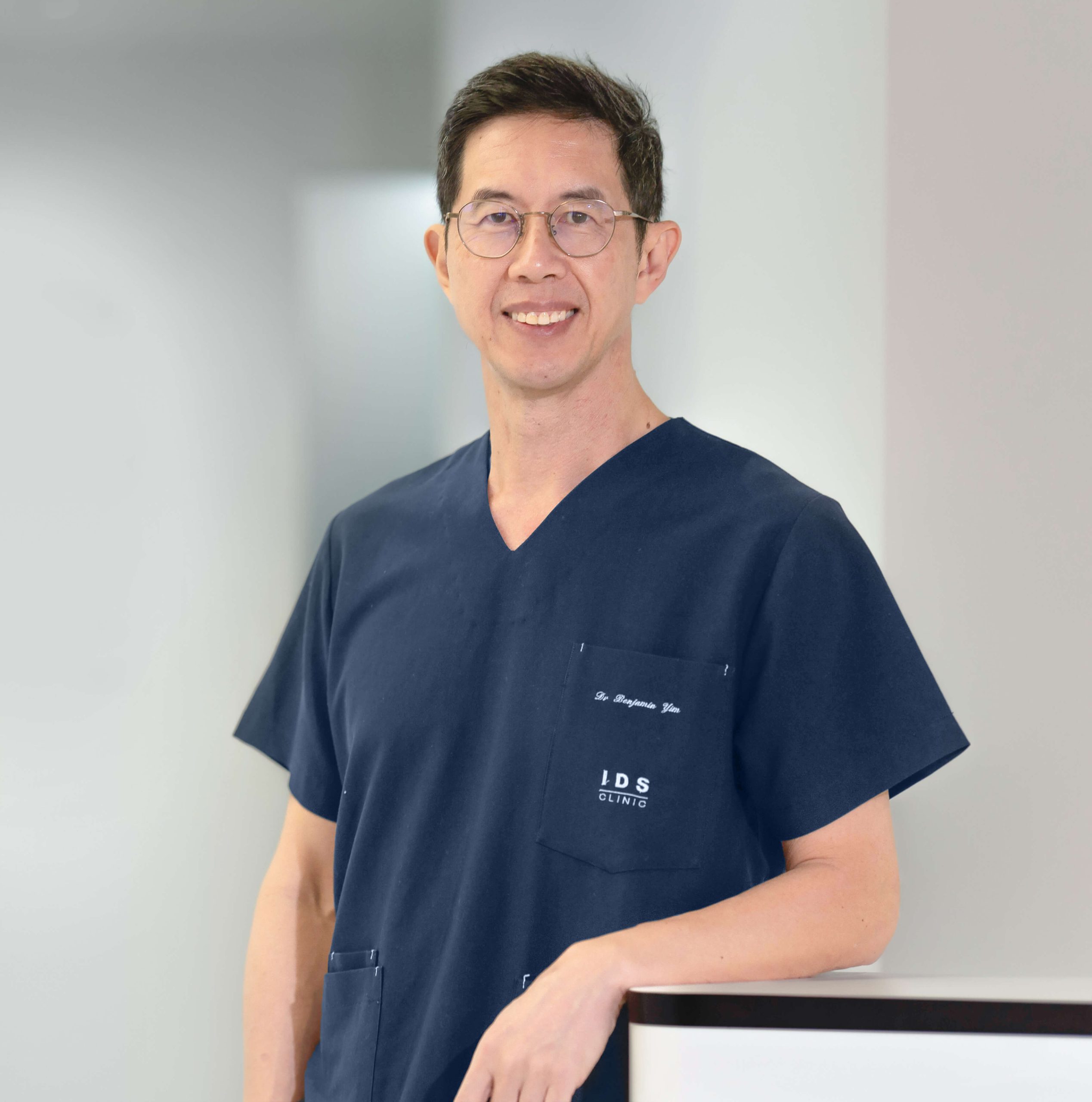
Dr. Ben Yim
Special Interest
- Anti-aging
- Hyper-pigmentation
- Body-Contouring
- Fat Reduction
Dr. Ben Yim
Dr Yim graduated from Monash University in Australia with a Bachelor of Medicine and Bachelor of Surgery degree. He has also earned a Master of Science in Clinical Dermatology from the University of London and more recently in Non-Surgical Facial Aesthetics from Anglia Ruskin University in UK, as well as a Graduate Diploma in Family Physicians in National University of Singapore.
- M.B.B.S (Monash University) 1994
- Diploma Practical Dermatology (University of Wales College of Medicine) 1998
- MSc. Clinical Dermatology (University of London) 1999
- MBA (University of Chicago) 2011
- MSc Non-Surgical Facial Aesthetics (Anglia Ruskin) 2018
- GDFM (NUS) 2019
Dr Yim has been practicing aesthetic medicine in private practice since 2000. The former director of Clinical Aesthetics & Laser Centre has been offering a wide armamentarium of aesthetic services including Botulinum Toxins, fillers for facial enhancement, skin tightening, fractional lasers, threadlifts, and non-invasive body contouring treatments.
As a trainer for Allergan Medical Institute in Singapore, Dr Yim has been invited to speak and train for numerous aesthetic workshops and conferences including “The Advanced Facial Anatomy and Injectables Workshop”, Botulinum Toxins and Filler injectable training workshops organized by Allergan, “The Singapore Disease Conference 2008” and “1st International Conference on Healthcare Transformation 2008” and Forum for Professional Self-regulation jointly organized by the SingHealth Centre for Health Services Research and the NUS Medical Society, to name a few.
Dr Yim comes from a family of four doctors, all in private practice in family medicine. Despite the move into full-time aesthetic medicine, Dr Yim has also taken an interest in family medicine pursuing a Master degree in Medicine in Family Medicine in NUS in which he hopes to complete in 2020.
Outside of his profession, Dr Yim also actively participates in social projects such as tattoo laser removal for prison inmates and teenage delinquents. For leisure, he enjoys golf, reading, playing the piano and running – he has participated in several half-marathons.
Special Interest
- Anti-aging
- Hyper-pigmentation
- Body-Contouring
- Fat Reduction
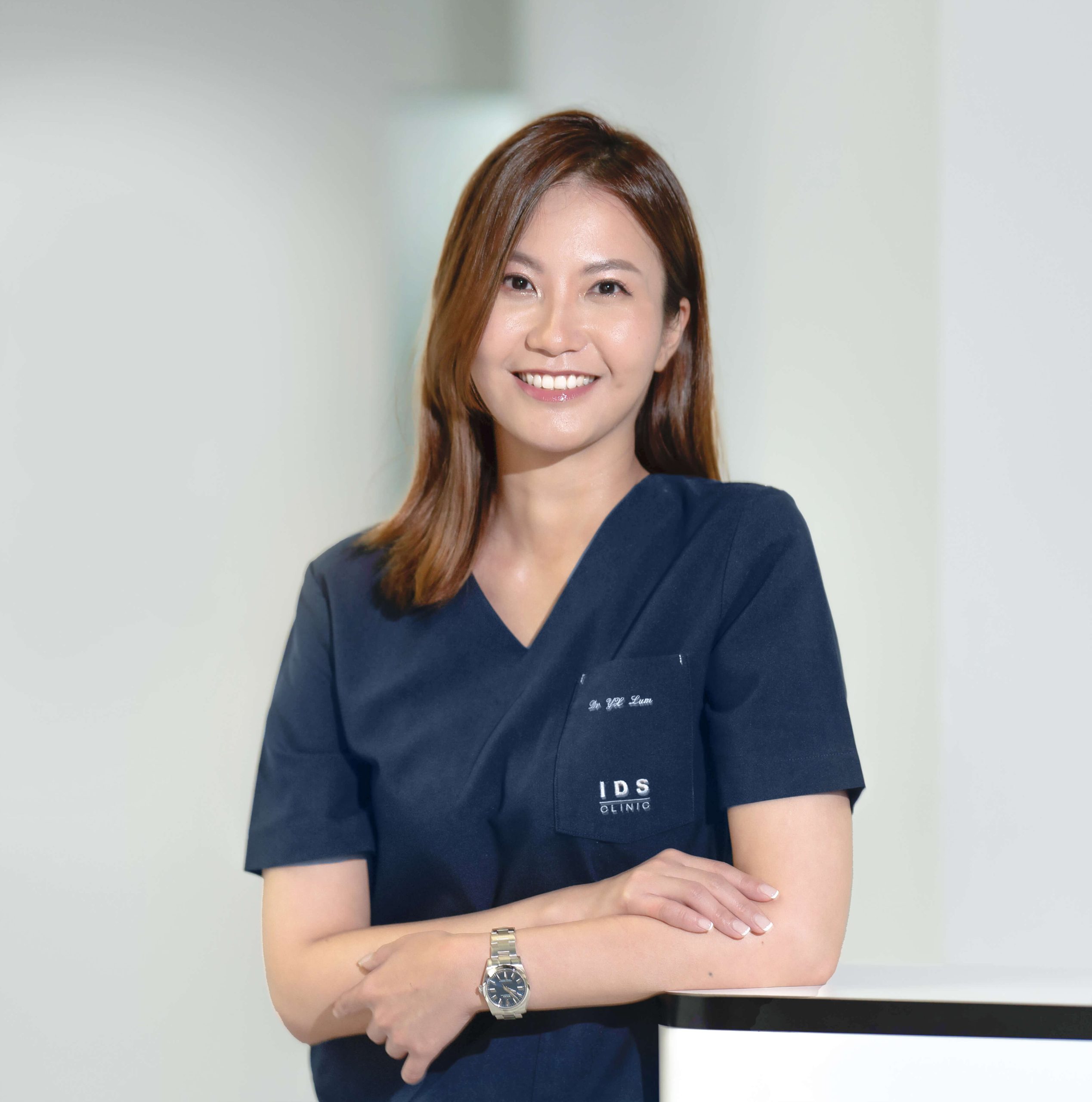
Dr. Liz Lum YX
Special Interest
- Acne
- Acne Scarring
- Fillers
- Neurotoxin Injection - Botulinum Toxins
- Face Lifting
- Facial Slimming and Contouring
Dr. Liz Lum YX
Dr Liz Lum YX graduated from Trinity College in Dublin with a Bachelor of Medicine and Bachelor of Surgery degree. She has also earned a graduate diploma in aesthetic medicine with the American Academy of Aesthetic Medicine (AAAM). Apart from these, Dr Lum has also attained certification by the Ministry of Health accredited bodies under the Singapore Medical Council’s Aesthetics Dermatology Education Group for various aesthetics procedures. Before joining IDS, Dr Liz Lum YX was a surgical trainee with the hand surgery department in SGH.
- MBBCH BAO (Trinity College Dublin)
- Diploma in Aesthetic Medicine, American Academy of Aesthetic Medicine
- Accredited by the Aesthetic Practice Oversight Committee (Singapore Medical Council) for Certificates of Competence in Aesthetic Procedures
- Diploma in Cosmetic Science (UK)
Jean Cocteau once said, “If there is a defect in the soul, it cannot be corrected on the face; but if there is a defect on the face and one corrects it, it can correct a soul.”
For this reason, Dr Liz Lum YX has a special interest in acne treatment that dates back to times when she had to deal with her own acne problems and breakouts. This drove her to identify the need for innovative products and treatments to treat acne problems. She strongly believes that many acne prone patients will benefit from a combination of innovative dermatological products, lasers and medications.
Dr Liz Lum YX’s other interests include injectables such as botulinum toxins, fillers and laser treatments for pigmentary disorders. Outside of her profession, she enjoys travelling and spending quality time with her family, friends and loved ones over good meals, movies, and a cup of coffee.
Special Interest
- Acne
- Acne Scarring
- Fillers
- Neurotoxin Injection - Botulinum Toxins
- Face Lifting
- Facial Slimming and Contouring
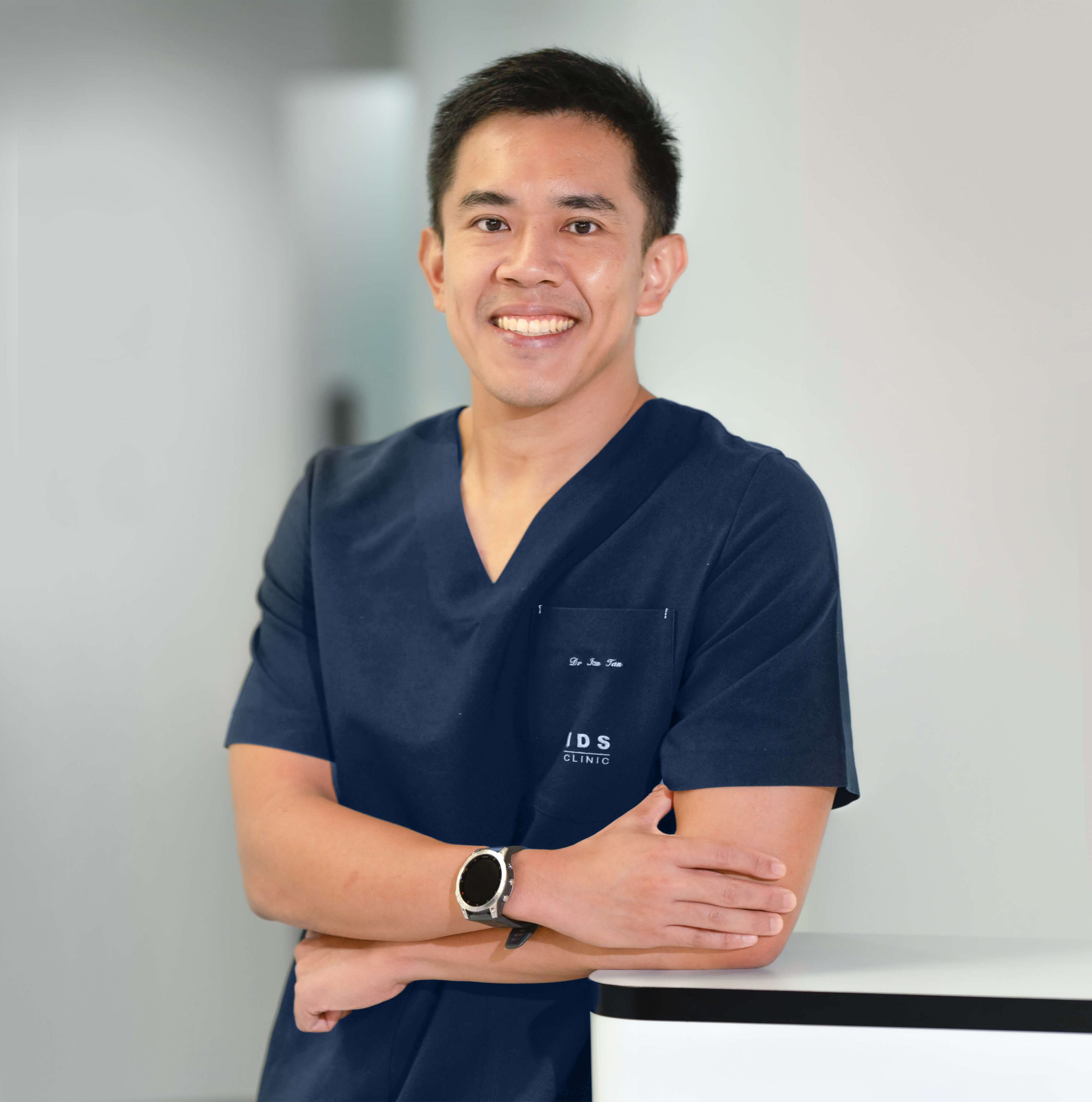
Dr. Ian Tan
Special Interest
- Acne
- Anti-Aging
- Body Contouring
- Face Lifting
- Facial Slimming and Contouring
- Hair Regrowth
- Weight Management
Dr. Ian Tan
Dr Tan graduated from the National University of Singapore and is one of the few medical doctors selected to lead the Singapore National Healthcare Group surgical residency program. He had his basic years of training in various hospital surgical specialties and he obtained Membership of the Royal College of Surgeons of Edinburgh (General Surgery) in 2013.
- MBBS (Singapore)
- MRCS (Edinburgh)
- GDFM (Singapore)
- GDFP Dermatology (Singapore)
- Certificate in Aesthetic Medicine, Amercian Academy of Aesthetic Medicine
- Accredited by the Aesthetic Practice Oversight Committee (Singapore Medical Council) for Certificates of Competence in Aesthetic Procedures
- Diploma in Cosmetic Science (UK)
- Accredited Family Physician
- Basic Obesity Management Accreditation 2 (BOMA 2)
- Certificate Course in Andrology
Through his practice, he developed a keen clinical interest in dermatological conditions and has obtained a Diploma in Dermatology (FP) from NUS. Dr Tan aims to help his patients achieve beauty through science by using appropriate skincare, aesthetic procedures and lasers. He believes his experience in surgery will complement his work in aesthetic and dermatological procedures at the IDS clinic.
A former national, Dr Tan was an avid athlete during his college days and developed him in local and regional canoe competitions. Outside of his profession, he enjoys running and going to the gym.
Special Interest
- Acne
- Anti-Aging
- Body Contouring
- Face Lifting
- Facial Slimming and Contouring
- Hair Regrowth
- Weight Management
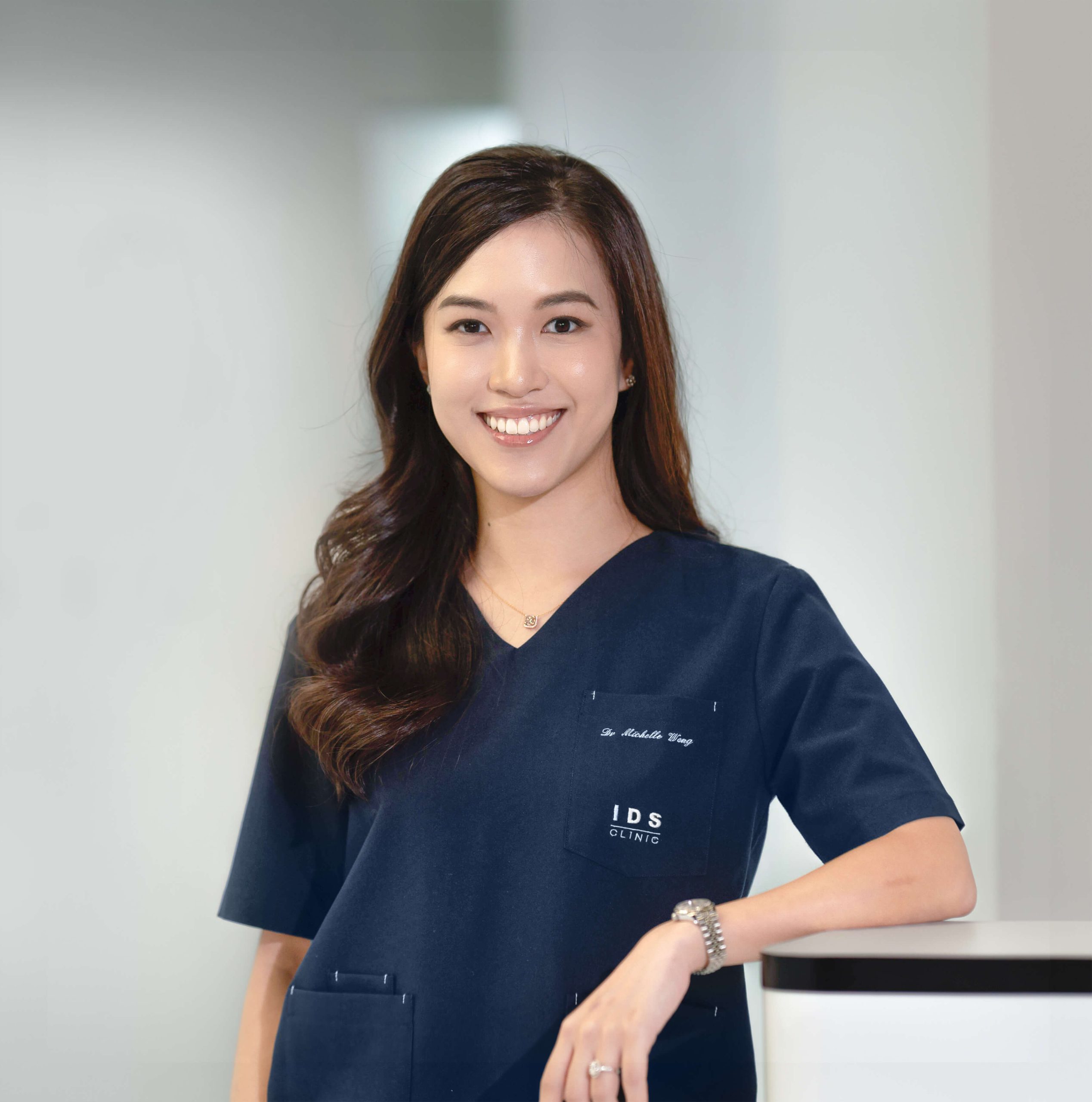
Dr. Michelle Wong
Special Interest
- Acne
- Acne Scarring
- Focused Ultrasound Lifting
- Skin Brightening
- Cryo based Treatment
Dr. Michelle Wong
Dr Michelle Wong graduated from The University of Melbourne, Australia with a Bachelors of Medicine, Bachelors of Surgery and Bachelors of Medical Science. She obtained her post-graduate Diploma in Clinical Dermatology with Distinction from the Queen Mary University of London, and holds a Diploma in Aesthetic Medicine with the American Academy of Aesthetic Medicine (AAAM).
- MBBS from The University of Melbourne, Australia
- Diploma in Clinical Dermatology from Queen Mary University of London
- Diploma in Aesthetics Medicine from American Academy of Aesthetic Medicine
- Diploma in Cosmetic Science (UK)
In aesthetics, Dr Wong believes she has discovered her ikigai – the intersection of what she is both good at and loves doing. Her preferred tools of the trade are injectables such as Botulinum Toxins & fillers, which she wields with finesse and intuition - often achieving what her patients desire but cannot express through words. Out of passion and interest, she regularly attends conferences and workshops, eager to learn about the latest treatments and techniques to further hone her craft.
Combining the science of medicine with the art of beauty, Dr Wong provides an honest consult to help her patients achieve their skincare and beauty goals. She believes in understated elegance – a focus on a less-is-more approach - and works to enhance her patients’ natural features whilst instilling self-confidence. Her reassuring and gentle approach puts patients at ease allowing her to achieve maximum results through safe and effective procedures.
In her free time, Dr Wong enjoys taking long walks with her dog at the park. Her family praises her inner domestic goddess that can whip up an impressive variety of home-cooked meals. She is also active in church medical missions and believes in contributing back to society through her God-given gifts and talents.
Special Interest
- Acne
- Acne Scarring
- Focused Ultrasound Lifting
- Skin Brightening
- Cryo based Treatment
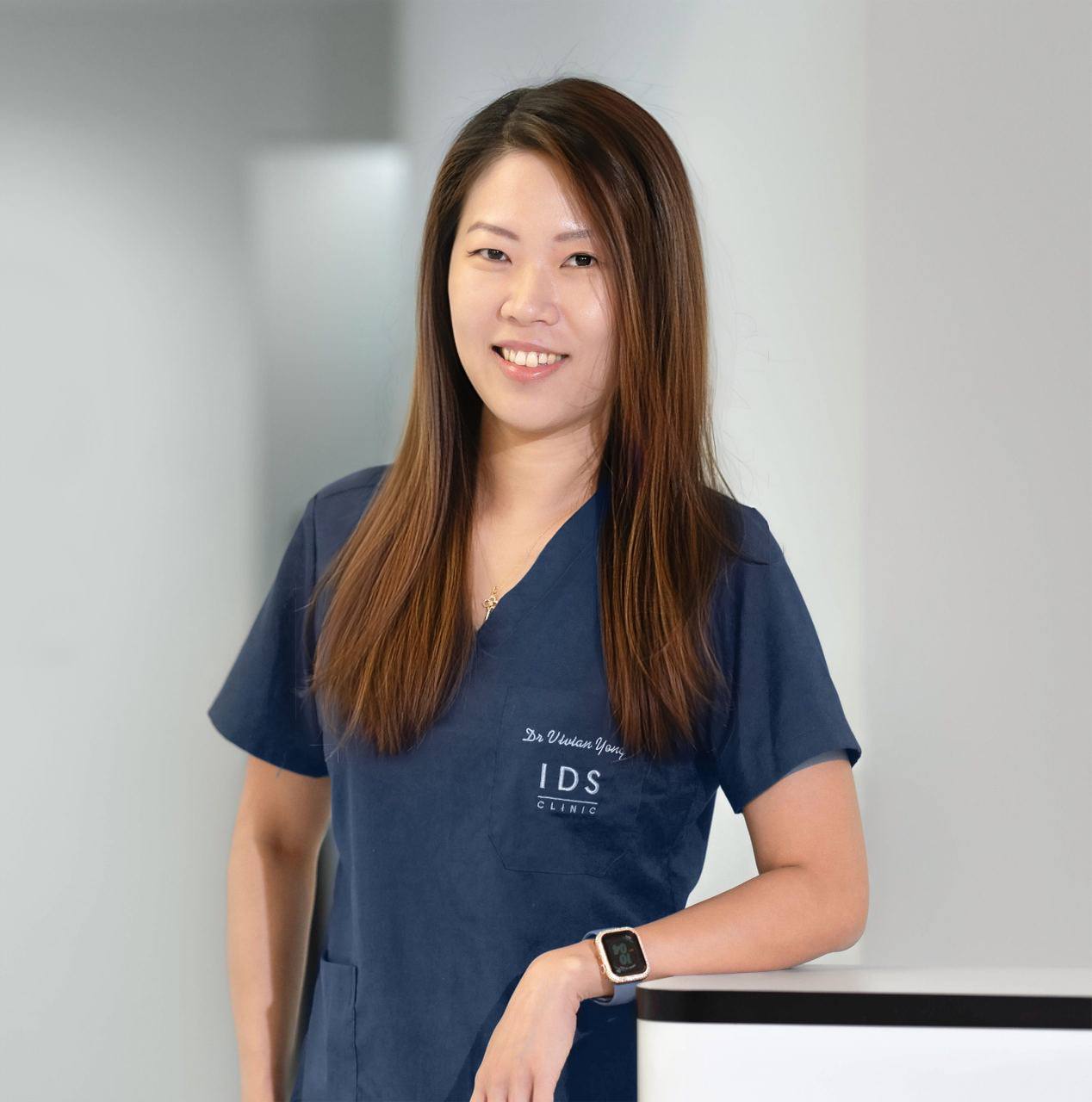
Dr. Vivian Yong
Special Interest
- Acne
- Acne Scarring
- Fillers
- Neurotoxin Injection - Botulinum Toxins
- Face Lifting
- Facial Enhancement
Dr. Vivian Yong
Dr Vivian Yong graduated from National University of Singapore in 2006, and has an experience of more than 10 years in Aesthetics. She has also accumulated extensive surgical skills and experience from various rotations in general surgery, ophthalmology, and ENT.
- MBBS
- GDFM
Dr Vivian has always had a natural inclination towards science subjects and this led her into medicine. During her medical graduate days, she developed a keen interest in Aesthetics and Skincare, and she believes that Aesthetics is one area that allows her to help a patient achieve their ideal artistic expression based on science. While Dr Vivian is always keen to accommodate her patients’ needs, she ensures that their welfare remains the utmost priority. This is why Dr Vivian is loved by her patients for always being meticulous and attentive to details.
Dr Vivian’s eye for beauty goes beyond aesthetics. Outside the clinic, Dr Vivian loves to spend her time in leather crafting and jewelry making, transforming basics into beauty. She also loves spending her quiet time exercising in the gym or chilling at home with her loved one.
Special Interest
- Acne
- Acne Scarring
- Fillers
- Neurotoxin Injection - Botulinum Toxins
- Face Lifting
- Facial Enhancement
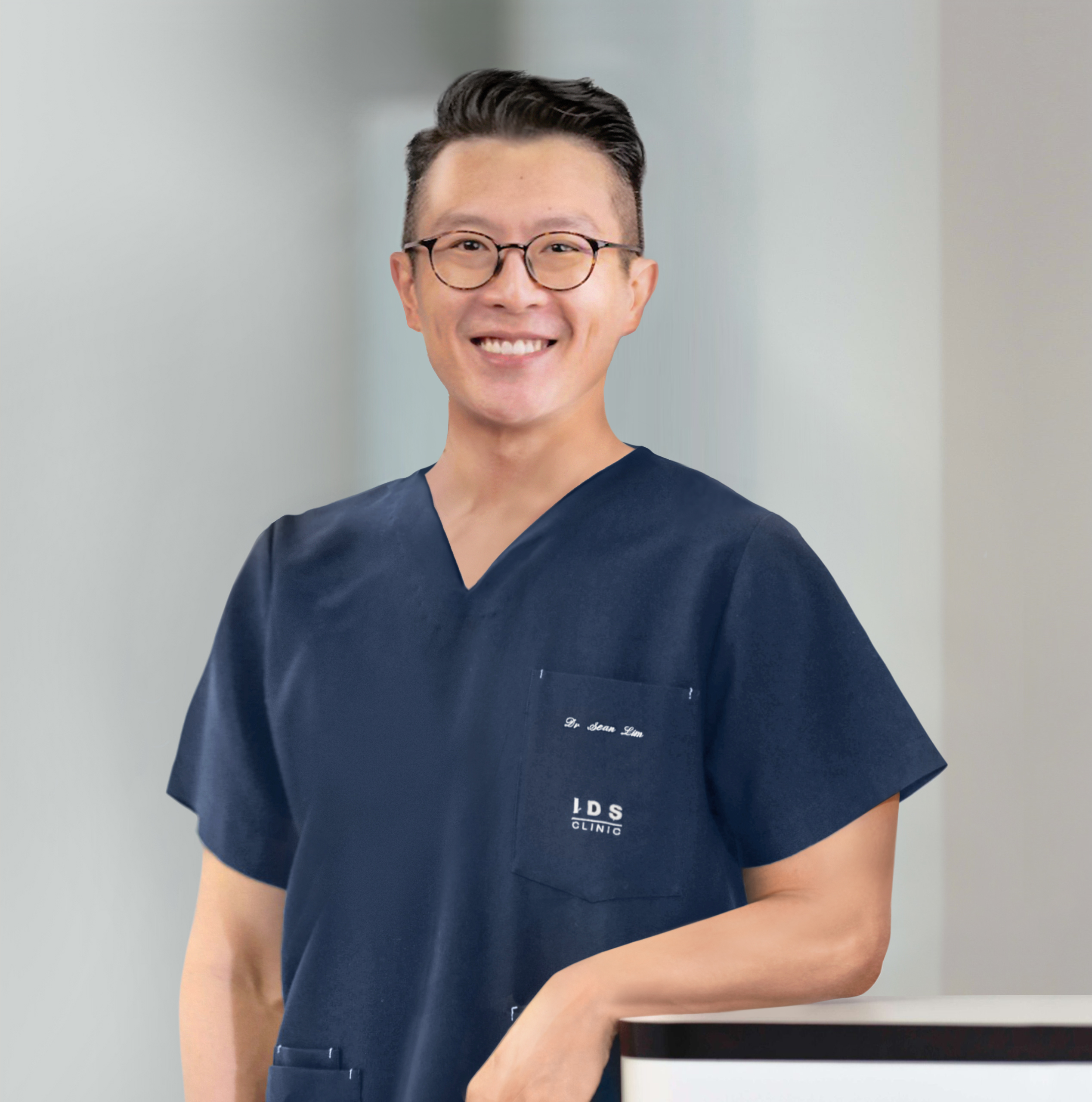
Dr. Sean Lim
Special Interest
- Acne
- Acne Scarring
- Fillers
- Neurotoxin Injection - Botulinum Toxins
- Face Lifting
- Facial Enhancement
Dr. Sean Lim
- MBBS (Singapore)
- Certified Personal Trainer
Dr Sean is a dedicated medical professional with a diverse background in procedural disciplines and holistic care. He graduated with an MBBS degree from the National University of Singapore, earning recognition on the Dean's List for his exemplary performance in his final year Professional Examination. Fully registered with the Singapore Medical Council (SMC), Dr Sean is also certified to perform aesthetic procedures by the Aesthetic Dermatology Educational Group (ADEG).
Beyond his clinical practice, Dr Sean actively engages in community service and leadership endeavours. He has contributed his medical expertise to humanitarian missions, including Naamjai Medical Missions trips to Thailand and a collaborative effort with plastic surgeons from NUH at Yangon's Defense Services General Hospital (DSGH).
Dr Sean's commitment to excellence extends beyond the medical field. As a former Singapore national athlete in pole vaulting, he has represented Singapore in numerous international competitions, earning accolades and setting records. Dr Sean’s passion for health and fitness is evident in his certification as a personal trainer and his dedication to maintaining an active lifestyle.
A proud new father, Dr Sean cherishes quality time with his family outside of work commitments, demonstrating a balanced approach to life and well-being. His belief in delivering quality care with a personal touch reflects his ethos as a compassionate healthcare provider.
Special Interest
- Acne
- Acne Scarring
- Fillers
- Neurotoxin Injection - Botulinum Toxins
- Face Lifting
- Facial Enhancement
How is acne scarring treated?
There are many treatments available for acne scars which can improve and soften the appearance of the scarring. A combination of treatments may be required. It is unrealistic to expect the return to completely normal skin following treatment.
The ideal treatment will depend on four main factors:
-
Skin type (skin type is classified according to the amount of pigment in the skin)
-
Type of scar (scars can be ”rolling”, “atrophic”, ”box car”, “ice pick” or “anchored”)
-
Downtime available (time it takes the skin to heal after the procedure)
-
Cost of the procedure (more complex procedures involving lasers and fillers will usually cost more than simple procedures such as radiofrequency and skin needling. Some procedures such as full laser resurfacing or scar revision conducted by specialists carry a Medicare rebate).
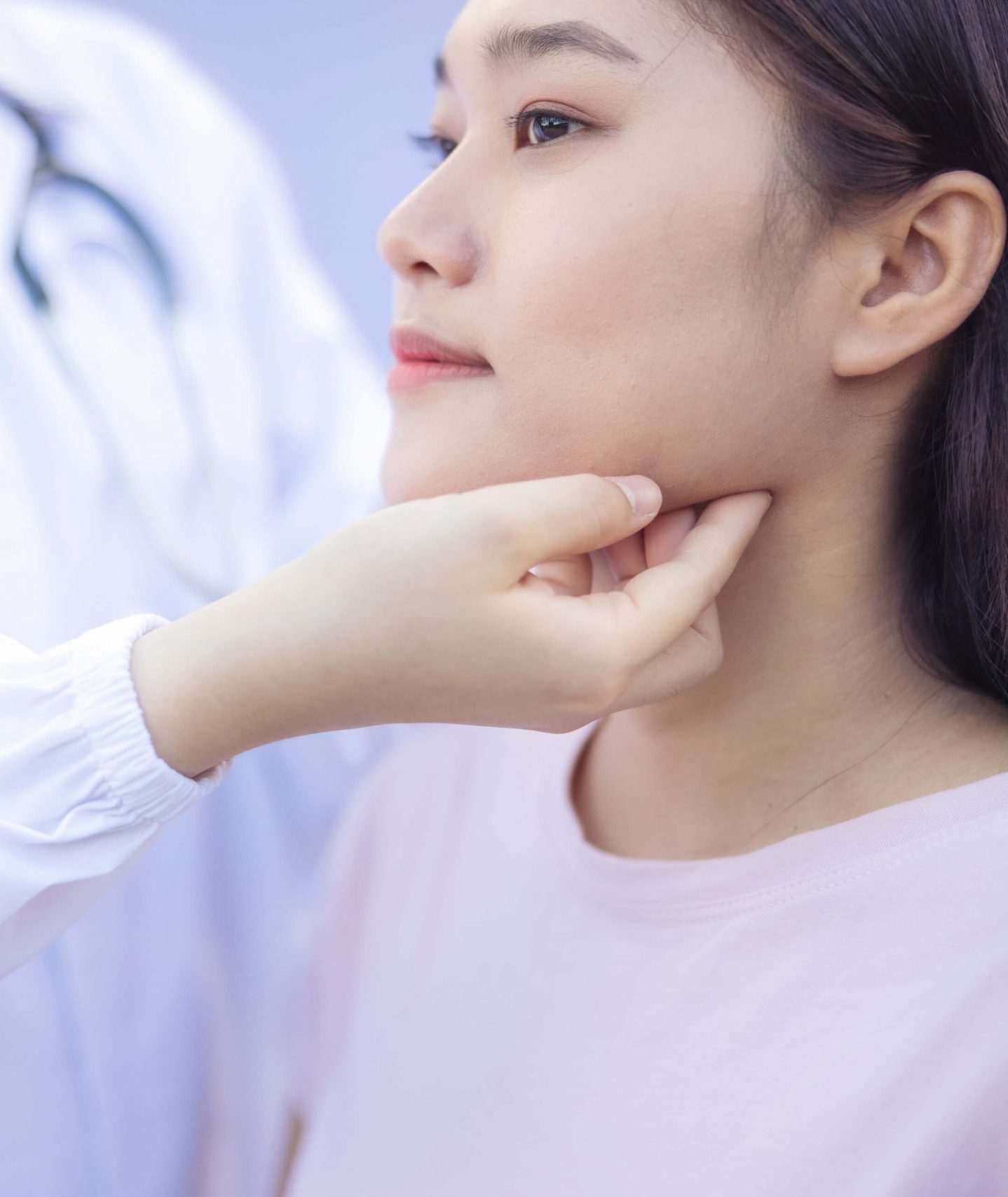
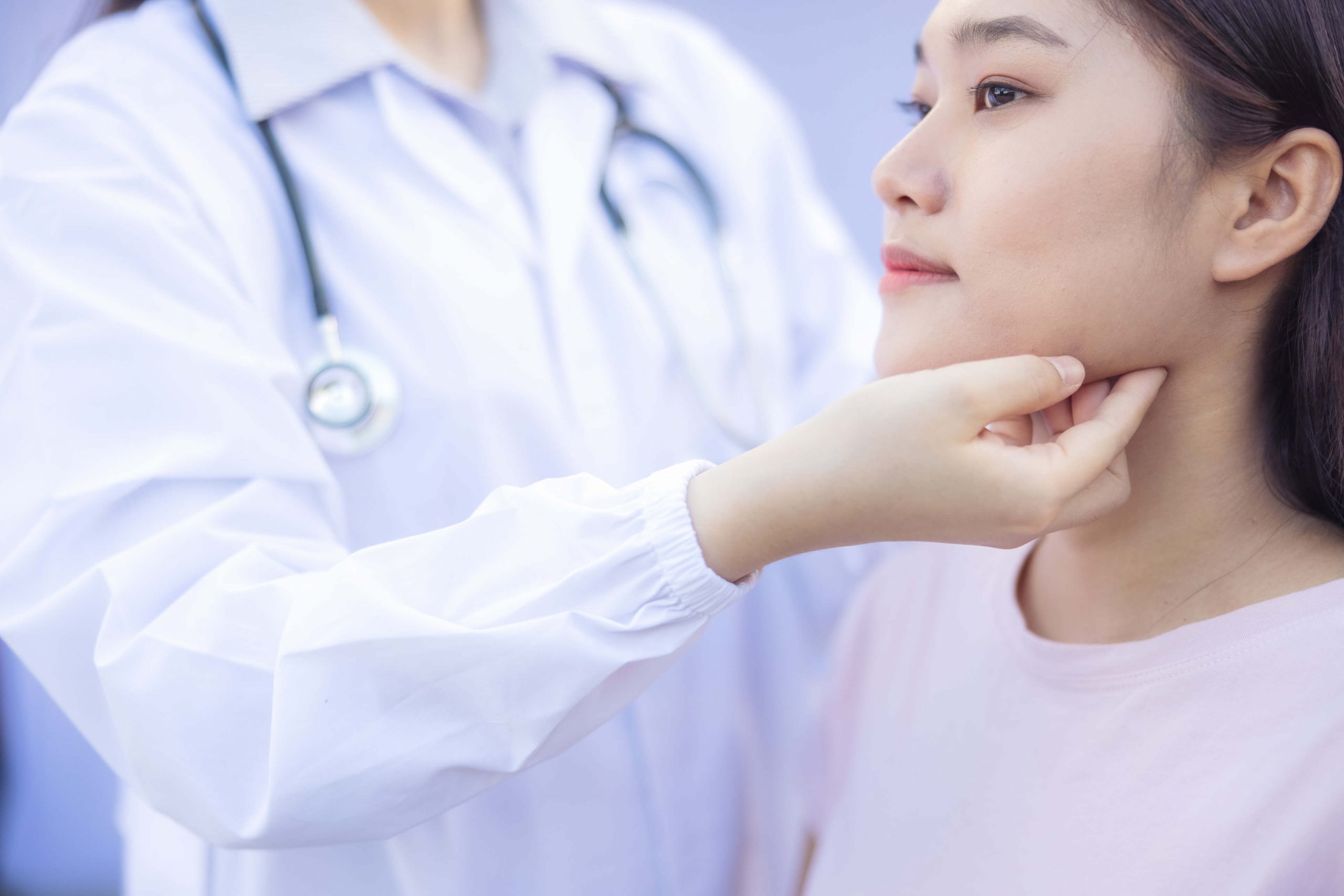
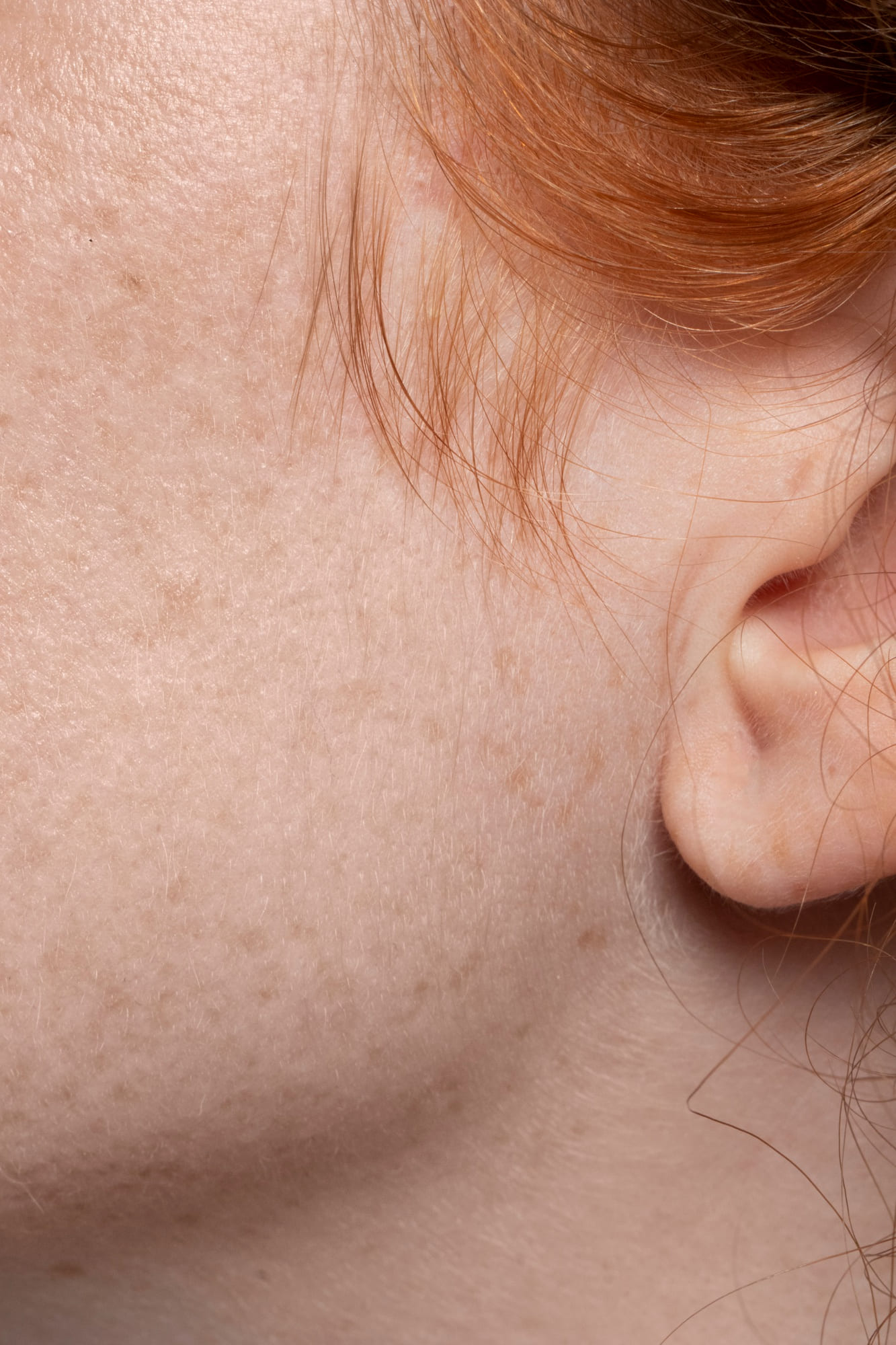

What are postinflammatory colour changes?
These colour changes occur after the inflamed bumps from the acne subside.
1. Post-inflammatory erythema – pink or purple flat patches
2. Postinflammatory pigmentation – brown marks (pigmentation), seen in people who can tan easily
3. Postinflammatory hypopigmentation – white marks
Postinflammatory colour changes improve with time, but it can take many months for them to completely resolve.
What causes acne scarring?
- They are caused by moderate to severe inflammation in the deeper layers of the skin. Examples are nodulocystic acne or infected acne from trauma or manipulation.
Hence, it is important that we treat acne in order to prevent scarring from acne. Scarring from acne is permanent, although there are laser treatments that can partially improve the scars.
Acne Scar Treatments In Singapore
Acne Scar Treatments In Singapore
Fillers
Hyaluronic filler injections are best used for atrophic scars and rolling scars. They have the advantage of immediate improvement and minimal downtime. The treatment is initially repeated at 6 monthly intervals but eventually the frequency may be reduced to twice yearly.
Intralesional corticosteroids
Intralesional corticosteroid injections may be recommended for bumpy acne scars.
Several injection treatments may be needed. The main side effects of these injections are the thinning of the skin and the fat around the area. This treatment can also be combined with a vascular laser.
Laser treatments
A combination of ablative or nonablative lasers can be used to stimulate collagen remodelling of the skin, causing tightening and smoothing of the scars. A series of monthly sessions are typically required. Patients can expect a 1 week downtime after each session.
There are two main types of laser treatments – ablative and non-ablative.
Fractional non-ablative (non-wounding) lasers
Variable wavelengths of fractional laser devices have been shown to improve acne scarring. They are best used for atrophic and rolling scars. These lasers can cause some temporary redness but do not actually break the skin surface. The advantages of non-ablative fractional lasers are rapid recovery times, the ability to treat darker skin types and higher safety profile. Recovery time following fractional laser treatment ranges between 3 to 8 days. Most people will benefit from a series of fractional laser treatments (2 to 5). Darker skin types will usually require more treatments compared with lighter skin types.
Ablative lasers
Ablative lasers are typically the recommended treatment for box-cart scars.
An ablative laser such as the Erbium YAG laser may be recommended for removing the superficial layers of the skin, followed by treatment of the dermis of the skin to break down the scar tissue at this level, using the fractional mode.
The downside of ablative lasers is the longer recovery times (up to 2 weeks). Redness following ablative lasers is a common side effect.
Radiofrequency (RF)
Radiofrequency is a non-invasive method of scar remodelling. Heat generated from the movement of electrons in the skin creates deep heating of the skin, leading to remodelling of the skin. This treatment is typically recommended for early acne scars, atrophic scarring, rolling scars and darker skin types. New forms of radiofrequency incorporate skin needling which delivers higher energy deeper into the dermis (skin).
TCA CROSS (Chemical reconstruction of skin scars)
Surgical methods of scar removal
Procedures such as punch excision, punch elevation and subcision may be recommended for treating deep ice pick scars as well as anchored or tethered scars. In most cases, laser resurfacing is recommended several months after the initial surgery.
Skin needling
Skin needling can be effective in the treatment of acne scars. Pen held devices have largely replaced skin needling rollers. Skin needling, as the name suggests, delivers needles of varying depths (0.5 to 3 mm) into the dermal layers of the skin. Needling breaks down scar tissue and stimulates the formation of new collagen. This treatment is more suitable for darker skin types however it is not as effective as fractional laser treatments. Lasers deliver controlled heating of the dermal layers, resulting in greater stimulation of collagen and more effective scar revision.
Types of Acne Scars
Types of Acne Scars
They can present clinically as: Shallow depression; Ice-pick scars(deep seated scars); Box-cart scars; Thickened and bumpy scars(hypertrophic scars)
Truncal acne can lead to keloid formation, where the scars enlarge over time and present as redness and itchiness over time. This is treated with regular corticosteroids injections for an indefinite period of time.
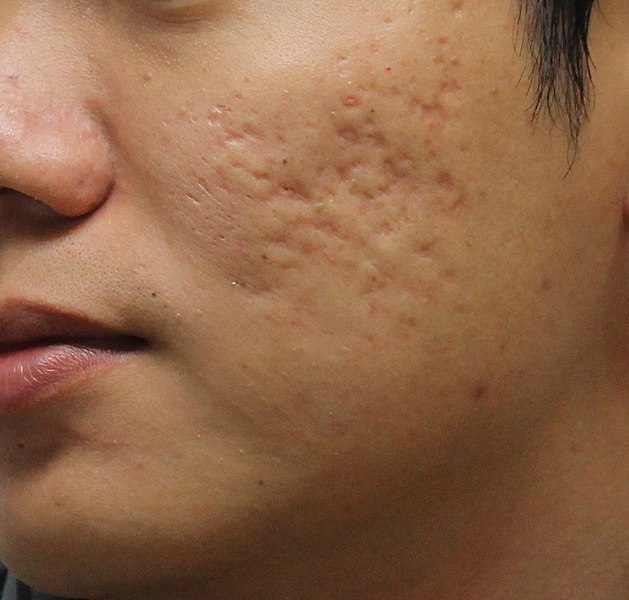
Box-cart acne scars
Box car scars are depressed scars which are shallow to medium in depth with well-defined edges, most commonly located on the cheeks and temples. Due to the relatively shallow depth, this type of scarring responds well to numerous treatments including full resurfacing, fractional lasers, dermal fillers and radiofrequency treatments.
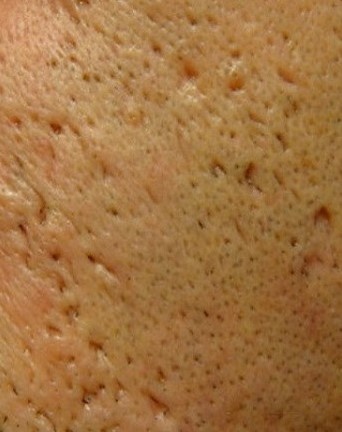
Ice-pick scars
Ice pick scars are deep and narrow scars that extend into the lower layer of the skin. Due to the depth of ice pick scars, procedures such as fractional treatments are not as effective as TCA CROSS (trichloroacetic acid chemical reconstruction of skin scars). The foundation of ice pick scar treatment is either to raise the depth of scarring or excise (remove surgically) the pick itself. Procedures such as punch excision or TCA CROSS can improve deep ice pick scars. Once scars are raised up to a shallower level, laser resurfacing provides the finishing touches.
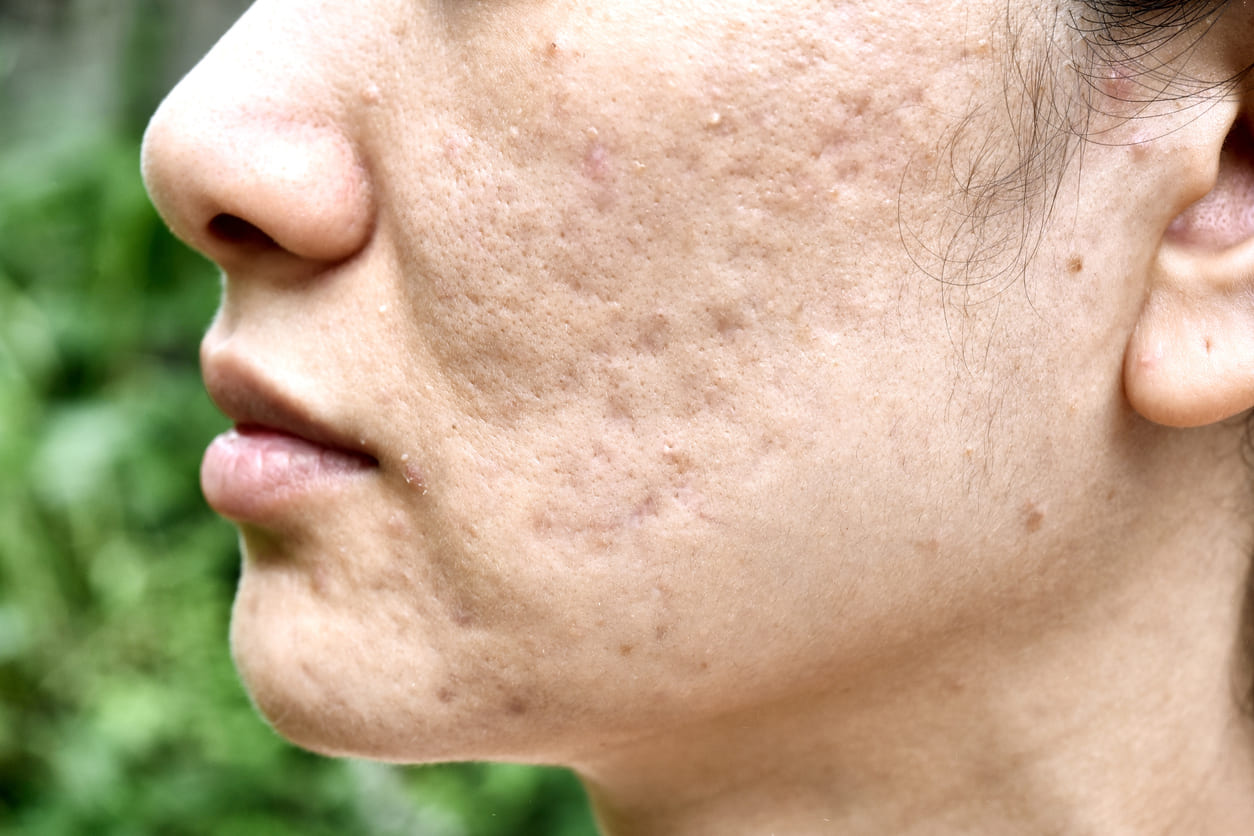
Rolling, atrophic and depressed acne scars
Rolling acne scars appear as undulations and depressions on the skin. Some scar areas may be anchored to deeper structures. A number of methods can be used to treat rolling scars and tethered scars including subcision, fractional laser resurfacing, radiofrequency and dermal fillers. The basis behind scar revision is to free up bound scars and fill up depressions with collagen. This form of acne scarring will usually require several treatments for the best possible outcome.
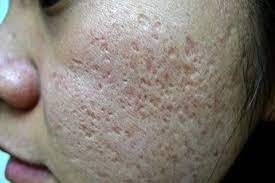
Mixed acne scars
This is the most common form of acne scarring. Most people will have a mixture of acne scars, including tethered or anchored scars, ice pick scars, box car scars and rolling scars. Different types of acne scars will require different treatments and a tailored approach to scar revision therefore provides the best outcome.
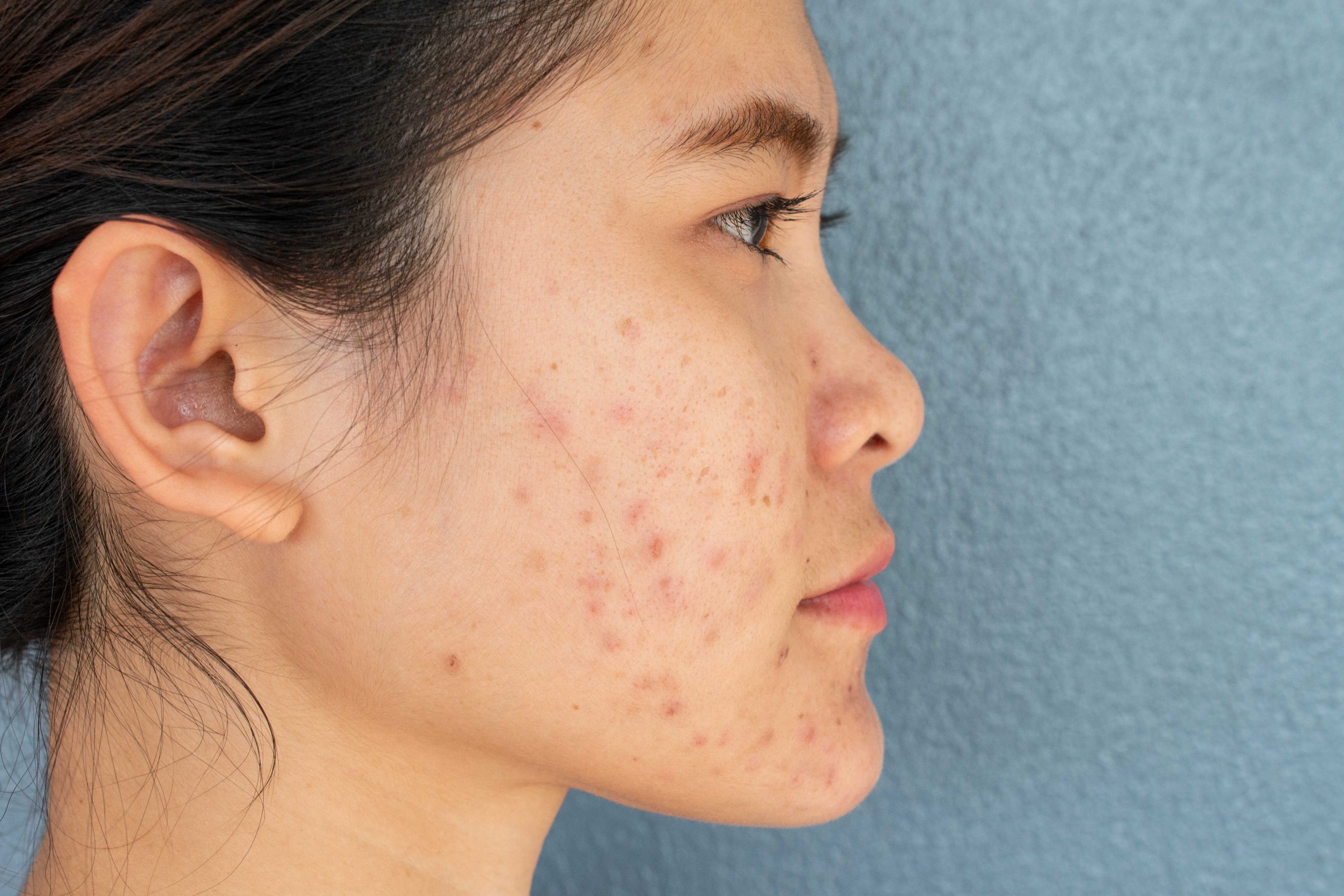
Red acne scars – macular scars
Macular acne scars are commonly seen on the cheeks and forehead areas and present as red areas. They occur as a result of early acne scarring. This type of scarring can fade over 6 to 12 months without treatment, however vascular laser treatment can sometimes hasten the resolution of scars. Several treatments are required for best results.
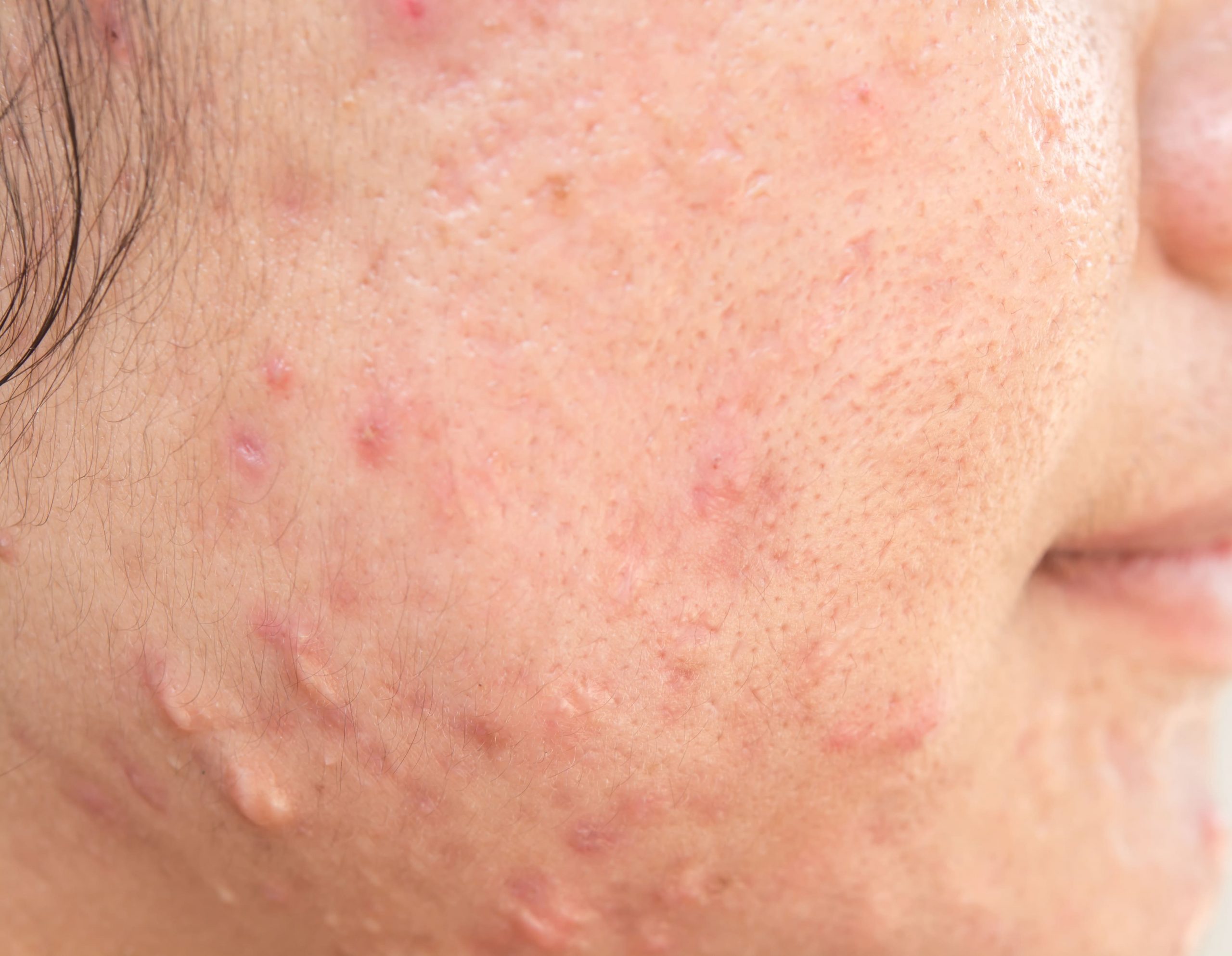
Hypertrophic and keloid scars
This type of acne scarring results in lumpy red scars, most commonly seen around the jawline, neck, chest and back areas. Lumpy scars can be treated with a series of corticosteroid injections. Most people will require 2 to 4 injections spaced 6 weeks apart. Redness in scars can be treated with vascular lasers however 3 to 4 treatments may be needed for best results.
Are your acne scars affecting your quality of life? Consult our doctors to get an accurate diagnosis of your condition and a suitable treatment plan.
Book AppointmentWe treat every problem in an
efficacious way.
Step into the world of aesthetic solutions built upon medical science.Where we integrate technology, artificial intelligence and complementary skincare to address the most common skin problems.
FAQs About Acne Scars
What is the likely outcome of acne scarring?
The final outcome is a partial improvement in the texture of the acne scars. It is therefore important that patients’ expectations are managed. This can be visible to patients and many will describe that makeup sits longer and spreads easier over the treated skin.
How long does it take to see results from acne scar treatments?
The time it takes to see results from acne scar treatments depends on the type of treatment and the individual's skin condition. Some treatments may show visible improvement after just one session, while others may require multiple sessions over several months to achieve the desired results.
Is acne scar treatment painful?
The level of discomfort experienced during acne scar treatment depends on the procedure and individual pain tolerance. Some treatments, like chemical peels or laser resurfacing, may cause mild to moderate discomfort. Your medical doctor may use numbing creams or other pain management techniques to minimize any discomfort during the treatment.
Can over-the-counter products help with acne scars?
Over-the-counter products containing ingredients like retinol, alpha-hydroxy acids (AHAs), or niacinamide may help improve the appearance of mild acne scars. However, more severe scarring usually requires professional treatments provided by a qualified doctor for optimal results.
Are there any risks or side effects associated with acne scar treatments?
Most acne scar treatments are safe when performed by qualified professionals. However, some risks and side effects can be associated with certain treatments, such as redness, swelling, temporary skin discoloration, or post-treatment breakouts. Consult your medical doctor before undergoing any acne scar treatment.
